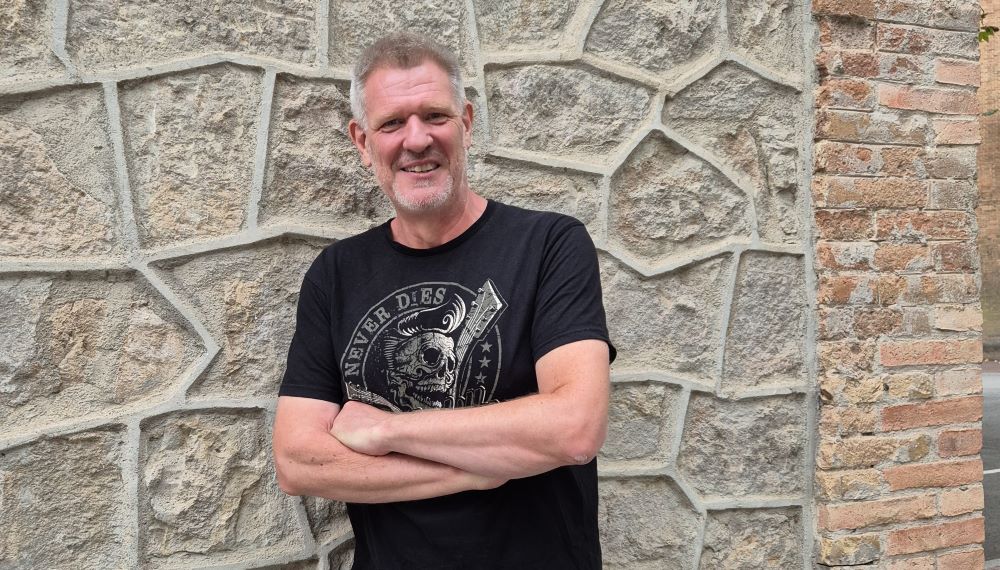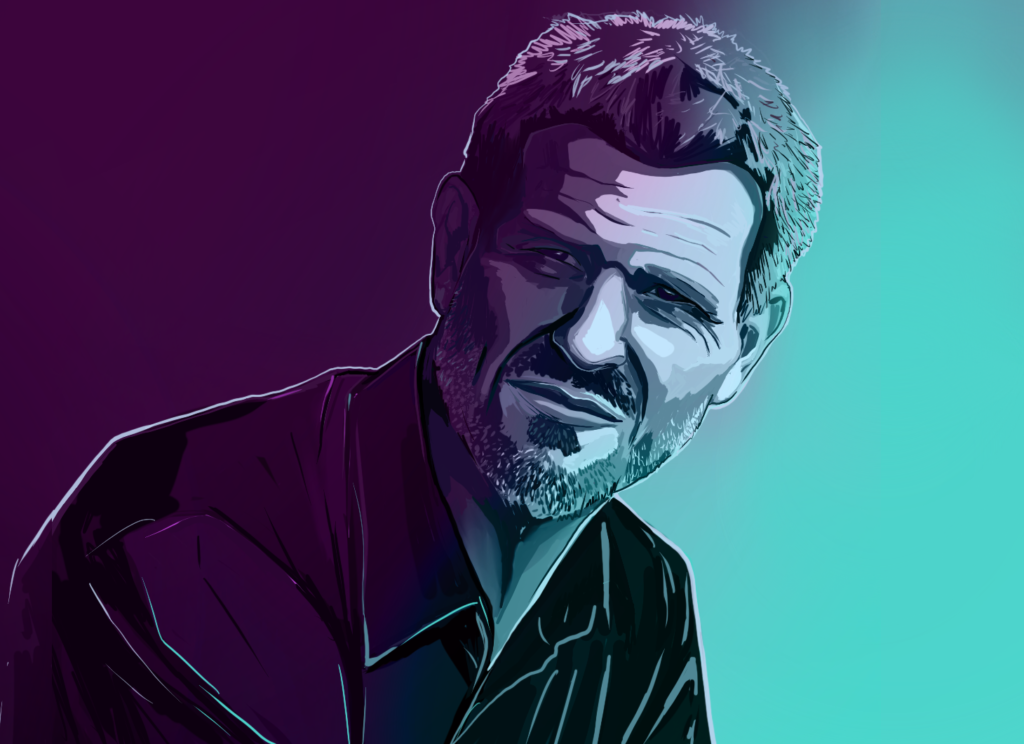When we learn anything, our brain makes new connections. If we also involve creativity, emotion and the senses in this learning process, the whole process is enriched. .
Neuroscience offers a great opportunity for artistic education, which has a special impact on the emotional factor, expression and creativity. We talked about all this with David Bueno, who has just given a seminar on neuroscience in arts education, offered by the Diputació de Barcelona. David Bueno is an expert in neuroscience, biologist, populariser and director of the UB-EDU1st Chair in Neuroeducation, the first in the world devoted exclusively to this subject.
We know a lot on how the brain works when it comes to learning, but is there a more specific factor when it comes to artistic learning?
The brain always learns in more or less the same way, whether it is artistic or other kinds of learning. Learning is nothing more than making new connections within the brain. And it doesn’t matter whether we learn the list of the rivers of Europe or memorise a musical score. But what I want to convey is the importance of artistic learning for the global construction of children and adolescents and, in fact, of people of any age.
Is the creativity that art allows basic, then, to the overall construction of the person?
A characteristic feature, though not exclusive to the arts, are all the creative and sensory aspects that the arts can bring. It is often said: music stimulates creativity – if you do it right, yes. If you do it right, yes. If you teach music and all you ask your students to do is to reproduce a score, uncritically, without contributing anything of their own, this is not creative. If you allow your students to reinterpret that piece, to add their emotions and feelings, to add things of their own, that is creativity. The arts stimulate creativity if you do it well. Reproducing a work of art is not creative, even if you do it very well, like the great forgers who copy a painting perfectly.
Art education has a particular impact on the emotional factor, on expression and on creativity. Is it a golden opportunity for neuroscience?
Yes, absolutely. Arts students at higher levels, such as those who want to join an orchestra as a musician, are perfecting technique in the extreme, and creativity is not so important at that point. But in initial and general education, such as pre-school, primary and secondary, it is very important.
In early childhood education, and up to the middle of primary school, the arts should be the central stem of learning, because it is what gives the most plasticity, what allows you to know yourself, to integrate the senses. It’s not that maths or languages shouldn’t be taught, but they should be based on the arts. And then, logically, it is necessary to rebalance it, because learning becomes more complex, more difficult, but if you already have a solid base of plasticity, of knowledge of your own body, of sensorially, you don’t need to keep working on it because you already have it.
Why is it that at the brain level when the emotional component is involved there is more richness in the whole learning process?
This is where the concept of intelligence comes in. Is intelligence knowing a lot of things, or knowing how to apply the things you already know? Being able to apply the things you know, in a new way, to different contexts, this is creativity. Creativity enhances intelligence in the sense that you see more possibilities, you see different ways of applying what you already know.
But is emotion being mythologised in the light of knowledge?
In education we have shifted from one end of the pendulum to the other, from learning by memorising and reproducing exactly what was in the textbook, to the other side where only creativity is valued. You can know a lot of history and not be able to apply it to the present moment, or the other way around, do a very creative task but then know nothing about history. Creativity must be based on prior learning. You have to learn things in order to be able to apply creativity afterwards. A middle way has to be found between these two systems, and here the arts have a lot to say. The education system has to find this balance.
How can music teachers, or dance teachers, or art teachers apply these principles of neuroscience?
It is simpler than it sounds, but there are no formulas. In the workshop I have made it very clear to them that in education two plus two does not equal four. What I do stress is the importance of combining the arts. In the same way that I am an advocate of combining the sciences and the humanities, the arts must also be combined with each other. We listen to a piece of music, we analyse it, and then we draw what inspired us. Or we look at a photograph and then we invent a melody that suggests this image to us. And also use the arts to creatively apply previous knowledge. For example, we are studying the cell in biology, and then we do a dance with the movements of the elements of the cell, where one pupil is the mitochondrion, another a protein, and so on. With this interaction you learn, because it reaches you, it enriches you sensorially, it makes you think and recreate.

Implementing these examples requires very good cooperation between science and arts teachers, or at least a strong motivation.
Coordination is useful and necessary, but often the most important thing is motivation. If the science teacher has this idea of dance, he can ask the music teacher for advice on how it could be done, and then do it himself in class. But it is very important that teachers are people who have an intellectual restlessness, a certain cultural life, otherwise how will they pass it on to their pupils? If the teacher never reads, the students notice it. They have to have a cultural base, to be open to other things more than their subject, because you are a human being who is a reference point for your students.
If the maths teacher not only explains how to do an equation, but also gives some historical context, or the history of the women at NASA who did the calculations for rockets with a simple calculator, you are enriching the class. If you add to this the explanation that these women were cornered because they were women and because they were black, you are introducing reflection on racism, you are putting history, ethics, values, into a mathematics class. There is a lot of social inertia, that the only important thing is knowledge, but how do you achieve this? It is important to change the way we look at things.
How a brain forms and matures influences how we learn, and vice versa, how we learn modulates the brain. It’s a two-way path
In humans, biology and culture interrelate in a fantastic way. Our genetic programmes adapt their functioning to how the person lives; if you live in an environment of other conflict, your genes adapt their functioning so that you can cope with this, and it makes you more aggressive, conflictive or individualistic. On the other hand, if you are in a context where you have time to get to know yourself, to enjoy a sunset, to distract yourself by looking at anything beautiful, it is enriching you, even if it seems like a waste of time. You have to take advantage of the moments when you are not doing anything specific, because then you have stopped voluntary thoughts, and the brain takes advantage of what you have done before and makes new connections.
Several studies have found that our personality factors related to creativity, self-knowledge and transcendence influence many other genes related to the perception of well-being. And here art is very present
This self-knowledge, this greater sensory integration, favours some small changes and increases your well-being, which is not the same as happiness. Well-being can be kept constant, even in the face of sadness and frustration. Happiness is ephemeral and when it is gone you feel empty. That’s why it’s important to enrich ourselves sensorially: for example, music comes to you not only through your hearing, but also through your sight because it suggests images, or provokes emotions, or reminds you of smells… Let’s enhance it. Also movement, which gives you a perception of your own body. Sensory integration is important for your own life. If not, how do you end up knowing who you are? Artistic practice helps. It is not a panacea, there are no miracles, but it accompanies this more reflective and interactive environment.
How can we help students to achieve this sensory integration?
Reaching the point of balance of pressure, stimulus, effort. Sometimes we have to do things that require effort, but that allow us to learn, but always without saturating them and always seeing the usefulness. Effort accompanied by moments of rest, of disconnection, of bonding…
Not from Tik Tok?
Indeed, there is a study of teenagers which found that half an hour walking with their peers, wandering around the neighbourhood, gives them a greater sense of comfort, for example through the secretion of serotonin, than spending two or three hours chatting on social media.
Interview originally published in the Blog de l’educació local del Diari de l’Educació



